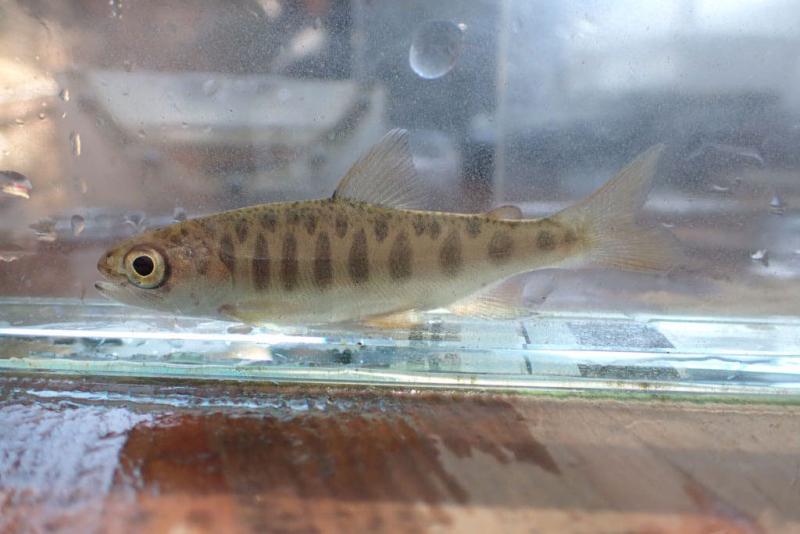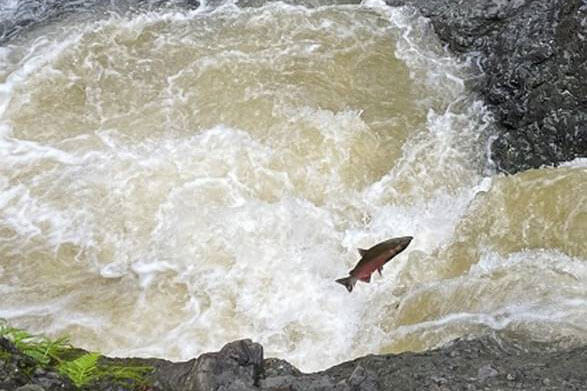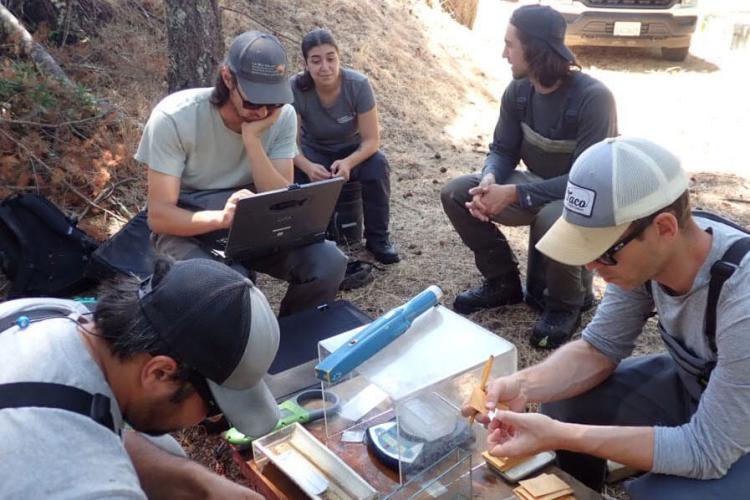NOAA Fisheries On The Need For Central California Coho Salmon Habitat Improvements
The following is courtesy of NOAA Fisheries:
 Juvenile CCC coho salmon temporarily captured during monitoring efforts. Photo: Mary Ann King, Trout Unlimited.
Juvenile CCC coho salmon temporarily captured during monitoring efforts. Photo: Mary Ann King, Trout Unlimited.
Although conservation efforts for endangered Central California Coast coho salmon have reduced some threats to the species, most threats remain largely unchanged over the last 5 years. Historical threats such as timber harvest and commercial fishing have lessened in the past few decades. Other threats, often linked to climate change, have worsened—and will likely worsen further in the coming decades.
Those are the conclusions of a recent 5-year review of the species conducted by NOAA Fisheries under the Endangered Species Act. The review is required every 5 years to ensure the species retains the correct designation of threatened or endangered and the appropriate level of protection. The review also recommends the most important recovery actions necessary over the next 5 years.
The timely recommendations will help inform new funding for fish passage and salmon conservation through the Bipartisan Infrastructure Law and other measures. NOAA Fisheries has designated Central California Coast coho one of nine national “Species in the Spotlight,” that warrant special attention to help promote their recovery.
“We have to make sure every dollar counts,” said Erin Seghesio, recovery coordinator for the species and lead author of the 5-year review. “The species is at a point where it needs every bit of help we can provide to prepare it for the challenges of climate change, and this review outlines the best way to do that—what they need, and when and where they need it.”
Central California Coast coho salmon are the latest of 28 Pacific salmon and steelhead species to undergo review. The first step was a biological viability assessment conducted by NOAA Fisheries’ Southwest Fisheries Science Center. It evaluated the viability of the populations based on the abundance of adult fish distributed across the landscape, sometimes in populations of only a few hundred fish.

Species Remains Below Targets
The assessment found that all populations of CCC coho salmon remain far below recovery targets for abundance. In some cases, they are at high risk of extinction. The viability of the species is progressively worse moving south in their range. The southern part of the species’ range also represents the southern extent of coho salmon, where water temperatures approach upper limits for the species.
Coho salmon spend more of their lives in freshwater rivers and streams. This makes them vulnerable to climate change as freshwater streams are increasingly stressed by drought, the assessment found. The magnitude and severity of wildfires on CCC coho salmon’s habitat have been widespread and will continue. Severe wildfires can cause substantial damage to riparian habitat and instream wood shelter, as well as greater risk for landslides and sediment input to streams.
Shifts in ocean dynamics, such as sea surface temperatures, wind patterns, and coastal upwelling, can also alter salmon migration patterns and food availability, greatly impacting their survival. Likewise, shifting temperature and precipitation patterns are expected to significantly alter historical river flow patterns. More intense winter flows, and lower streamflows during dry periods will lead to lower juvenile survival rates.

Actions Needed For Recovery
The 5-year review recommended the most important recovery actions for the next 5 years. It stressed landscape-scale habitat restoration and protection of stream flows to improve the resilience of the species to climate change. The review recommends removing barriers to migration and movement of adult and juvenile coho salmon. It also noted that habitat improvements should include in-stream, floodplain, and estuarine habitat complexity that support habitat function. Protections and improvements in river flow will help protect all coho salmon life stages and habitat.
The review also examined the role and contributions of conservation fish hatcheries. The Don Clausen Coho Salmon Broodstock Program in Geyserville, California has helped prevent the extinction of the Russian River CCC coho population, while conserving genetic integrity. NOAA Fisheries and the California Department of Fish and Wildlife are considering options for a similar southern conservation facility in coastal Santa Cruz and San Mateo counties.
In light of their high risk of extinction, NOAA Fisheries identified CCC coho salmon as one of nine national Species in the Spotlight in need of focused recovery efforts. Recommendations in the 5-year review align with the Species in the Spotlight 5-year Action Plan to promote recovery.
“We have a lot of work to do together to turn this species toward recovery,” Seghesio said. “We have the advantage of comprehensive science that tells us where to focus our efforts, so we know what we have to do to make real progress.”



